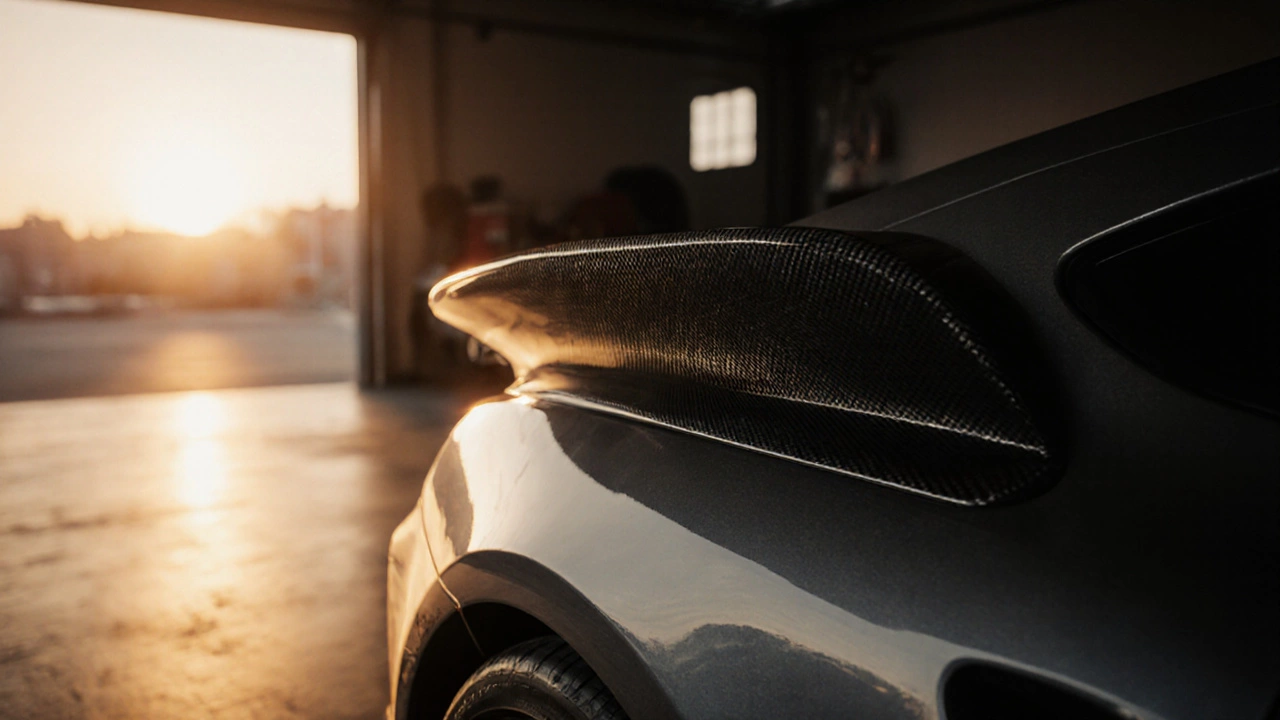When dealing with carbon fiber spoiler issues, these are the problems that can appear on carbon fiber spoilers, such as cracking, delamination, excess vibration, or poor fitment. Also known as CF spoiler problems, they often stem from material fatigue, incorrect bonding, or mismatched aerodynamic loads.
One of the most talked‑about parts is the carbon fiber spoiler, a lightweight wing that promises high downforce without the weight penalty of metal. The spoiler itself is a composite of woven carbon strands and resin, giving it a high strength‑to‑weight ratio. However, that ratio can drop if the resin cure is off or if the spoiler endures constant flex. When the material isn’t cured properly, micro‑cracks can form, leading to the classic carbon fiber spoiler issues many enthusiasts dread.
Another frequent complaint is spoiler vibration. Vibration occurs when the spoiler’s natural frequency aligns with road or aerodynamic frequencies, causing a humming or shaking sensation. This not only annoys the driver but can accelerate fatigue cracks. Fixes usually involve adding dampening pads, tightening mounting bolts, or adjusting the spoiler’s angle to shift its resonant frequency.
Understanding aerodynamic downforce is key to preventing many of these issues. Downforce is the vertical force created by air flowing over the spoiler; the more efficiently it’s generated, the more grip a car has at speed. Too much downforce on a poorly designed or weakly bonded spoiler can overload the carbon fibers, while too little can cause lift and instability. Designers aim for a balance: enough downforce for performance without overstressing the material.
Finally, spoiler installation practices dramatically affect longevity. Using the right adhesive, torque specifications, and surface preparation ensures the bond can handle both static loads and dynamic vibrations. Skipping steps like cleaning the mounting surface or using a low‑grade glue often leads to early failure. A proper install also aligns the spoiler with the car’s centerline, reducing uneven stress distribution.
All these threads—material quality, vibration control, aerodynamic balance, and correct installation—interact to shape the overall health of a carbon fiber spoiler. Below you’ll find articles that dig deeper into each aspect, from choosing the right resin to testing for resonant frequencies, giving you the tools to keep your spoiler performing without a crack in sight.

Explore the health, safety, and environmental downsides of carbon fiber spoilers, compare alternatives, and learn how to mitigate risks for a smarter car upgrade.